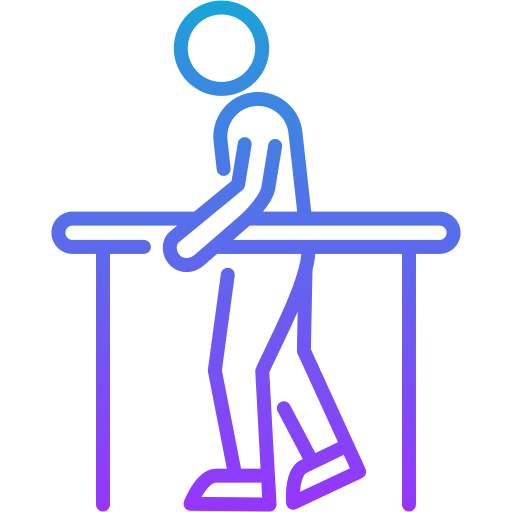Dr.Apoorv Dua
Total Foot & Ankle Replacement Surgery: Restoring Mobility and Relieving Pain
Total hip replacement surgery is a proven procedure designed to alleviate chronic pain and restore mobility for patients suffering from severe hip joint damage or arthritis.
- Alleviates chronic hip pain caused by arthritis or injury.
- Restores hip function, allowing for better movement and daily activity.
- Smaller incisions mean less tissue damage and quicker recovery.
- Long-lasting artificial joints for enhanced function and longevity.
Consult a Doctor

Foot & Ankle Replacement
Total foot and ankle replacement surgery is a highly effective procedure used to alleviate pain and improve mobility for patients suffering from joint damage or arthritis in the foot and ankle. Traditionally, the surgery involved making a large incision, dissecting tissue, and removing damaged bone, leading to longer hospital stays, extended recovery periods, and more significant post-operative discomfort. However, advancements in medical technology have paved the way for minimally invasive foot and ankle replacement surgery, which has become a preferred option due to its numerous benefits.
Minimally Invasive Foot and Ankle Replacement Surgery uses smaller incisions and causes less disruption to the surrounding muscle and tissue. As a result, patients experience reduced pain, faster recovery times, and a shorter hospital stay, making it an excellent alternative to traditional foot and ankle replacement surgery.
Know More
About Foot & Ankle Replacement
-
 Symptoms
Symptoms
-
 Diagnosis
Diagnosis
-
 How We Perform
How We Perform
-
 Why Is Treatment Needed?
Why Is Treatment Needed?
-
 Recovery
Recovery
-
 Rehabilitation
Rehabilitation
-
 Prevention
Prevention
Foot and ankle joint problems usually present with symptoms like persistent pain, stiffness, or discomfort in the foot, heel, or ankle area. Patients may also experience difficulty walking, reduced range of motion, and pain during weight-bearing activities like standing, walking, or climbing stairs.
Key Points:
- Persistent foot or ankle pain, especially during movement or after physical activity.
Stiffness in the foot, ankle, or heel, limiting range of motion.
Difficulty walking or standing for long periods without discomfort.
- Pain that radiates to the lower leg or toes.
- Pain or discomfort that persists even when resting or lying down.
Diagnosis involves a thorough physical examination by your doctor, combined with imaging techniques like X-rays and MRI scans to assess the extent of joint damage. This allows the doctor to determine whether foot and ankle replacement surgery is necessary or if alternative treatments might be more suitable.
Key Points:
- A physical examination to assess range of motion and joint function in the foot and ankle.
- X-rays to evaluate bone structure and detect joint damage or deformities.
- MRI scans to assess cartilage, ligaments, and soft tissue damage.
- Blood tests may be performed to rule out infections, arthritis, or other conditions.
- A thorough medical history to understand symptoms, previous injuries, and underlying health issues.
In minimally invasive foot and ankle replacement surgery, small incisions are made to access the joint. Damaged cartilage and bone are removed, and an artificial joint made of metal, plastic, or ceramic is implanted. The procedure minimizes tissue disruption, which helps in quicker recovery and reduced post-operative pain.
Key Points:
- Minimally invasive approach with small incisions to access the foot or ankle joint.
- Removal of damaged bone and cartilage from the affected joint.
- Placement of a prosthetic joint made of metal, ceramic, or plastic.
- Reduced tissue damage for less post-operative pain and quicker recovery.
- Surgery typically lasts 1-2 hours, with most patients discharged in 1-3 days.
Foot and ankle replacement surgery is crucial when joint damage becomes severe, causing chronic pain and impairing mobility. Left untreated, foot and ankle joint damage can lead to further complications, affecting the patient’s overall quality of life. The surgery helps restore function, relieve pain, and enhance the ability to perform everyday tasks.
Key Points:
Severe pain that interferes with daily activities and overall quality of life.
- Loss of mobility, making it difficult to walk, stand, or perform regular tasks comfortably.
- Risk of joint damage worsening over time if left untreated.
- Alleviates chronic pain caused by arthritis, injury, or degeneration.
- Surgery restores joint function, enabling a return to normal activities and improved movement.
Recovery after foot and ankle replacement typically involves a hospital stay of 1-3 days. Patients are encouraged to walk with assistance shortly after the procedure. Full recovery can take 6-12 weeks, depending on the individual, but most people return to their regular activities within this time.
Key Points:
- Initial hospital stay of 1-3 days, depending on individual recovery.
- Patients typically begin walking with assistance within 24-48 hours.
Full recovery takes 6-12 weeks with proper rehabilitation.
- Pain management includes medication and physiotherapy.
- Gradual return to daily activities as strength and mobility improve.
Rehabilitation is a critical part of the recovery process. A personalized physical therapy plan helps to restore strength and range of motion in the foot and ankle. Exercises focus on improving mobility, stability, and balance. Adherence to the rehabilitation program is essential for optimal recovery outcomes.
Key Points:
- Personalized physical therapy plan to strengthen the foot and ankle joint.
- Focus on exercises that improve mobility, stability, and balance.
Regular follow-up appointments to monitor progress and adjust treatment.
- Home exercises to continue strengthening after therapy sessions.
- Commitment to rehabilitation significantly enhances recovery outcomes.
Preventing future foot and ankle issues involves maintaining a healthy weight, staying active, and engaging in low-impact exercises to strengthen the muscles surrounding the foot and ankle joints. Proper footwear and avoiding activities that put excessive strain on the feet are also essential in reducing the risk of further joint problems.
Key Points:
Maintain a healthy weight to reduce pressure on foot and ankle joints.
- Engage in low-impact exercises like swimming or cycling to strengthen foot and ankle muscles.
- Avoid high-impact activities that put excessive strain on the feet and ankles.
- Practice proper footwear and posture to prevent joint deterioration over time.
- Regular check-ups and early intervention can prevent further foot and ankle issues.
WHY US?
Why Choose Dr. Apoorv Dua
At our clinic, Dr. Apoov Dua provides expert care in Total Hip Replacement Surgery. With years of experience in orthopedic surgery, Dr. Dua specializes in minimally invasive techniques, ensuring faster recovery and improved long-term outcomes for his patients.

50,000+
Patients Experience

25,000+
Procedures

1000+
Trauma surgeries

5000
Joint Replacement Surgeries
Check Surgery Cost
We believe in transparency. You can enquire about the Surgery Cost and we will help you with complete detailed treatment process till your recovery.
Frequently Asked Questions About Hip Replacement
Total foot and ankle replacement surgery involves replacing a damaged joint with a prosthetic one, made of metal, ceramic, or plastic. It aims to relieve pain, improve mobility, and restore function in patients with severe joint damage or arthritis.
Candidates for foot and ankle replacement surgery are individuals with severe arthritis, joint damage, or deformities causing chronic pain and limiting mobility. When non-surgical treatments fail to provide relief, surgery may be considered to restore function and reduce discomfort.
The foot and ankle replacement procedure typically takes 2 to 3 hours, depending on the complexity of the case and the type of joint replacement being performed. The surgeon will evaluate individual factors to determine the exact time needed.
Recovery after foot and ankle replacement surgery typically takes 6 to 12 weeks. During this time, patients focus on managing pain, restoring mobility, and strengthening the joint. Full recovery may take several months, depending on individual progress and rehabilitation.
Foot and ankle replacement surgery may cause discomfort and pain during the recovery period, but pain is generally managed with medications. While the procedure itself is done under anesthesia, post-operative pain typically decreases over time as healing progresses with proper care and rehabilitation.
Yes, physical therapy is typically required after foot and ankle replacement surgery. It helps restore strength, mobility, and function in the joint. Therapy focuses on improving range of motion, stability, and balance, which is essential for a full recovery.
The foot and ankle prosthesis typically lasts 10 to 15 years or longer, depending on factors like activity level, weight, and overall health. Proper care and avoiding high-impact activities can help extend the lifespan of the prosthesis.
Yes, like any surgery, foot and ankle replacement surgery carries risks, including infection, blood clots, nerve or blood vessel damage, implant failure or loosening, and stiffness or limited range of motion. Your surgeon will take steps to minimize these risks.
After foot and ankle replacement surgery, you can gradually return to light activities such as walking, driving, and light household tasks. However, high-impact activities like running, jumping, or heavy lifting should be avoided to protect the prosthesis. Your doctor will guide you on suitable activities based on your recovery.
You can typically begin walking with assistance 1 to 2 days after foot and ankle replacement surgery. However, weight-bearing activities will be gradually increased based on your healing progress. Full weight-bearing may take 6-8 weeks, depending on individual recovery.
What Our Patients Say
Based on 160 reviews









